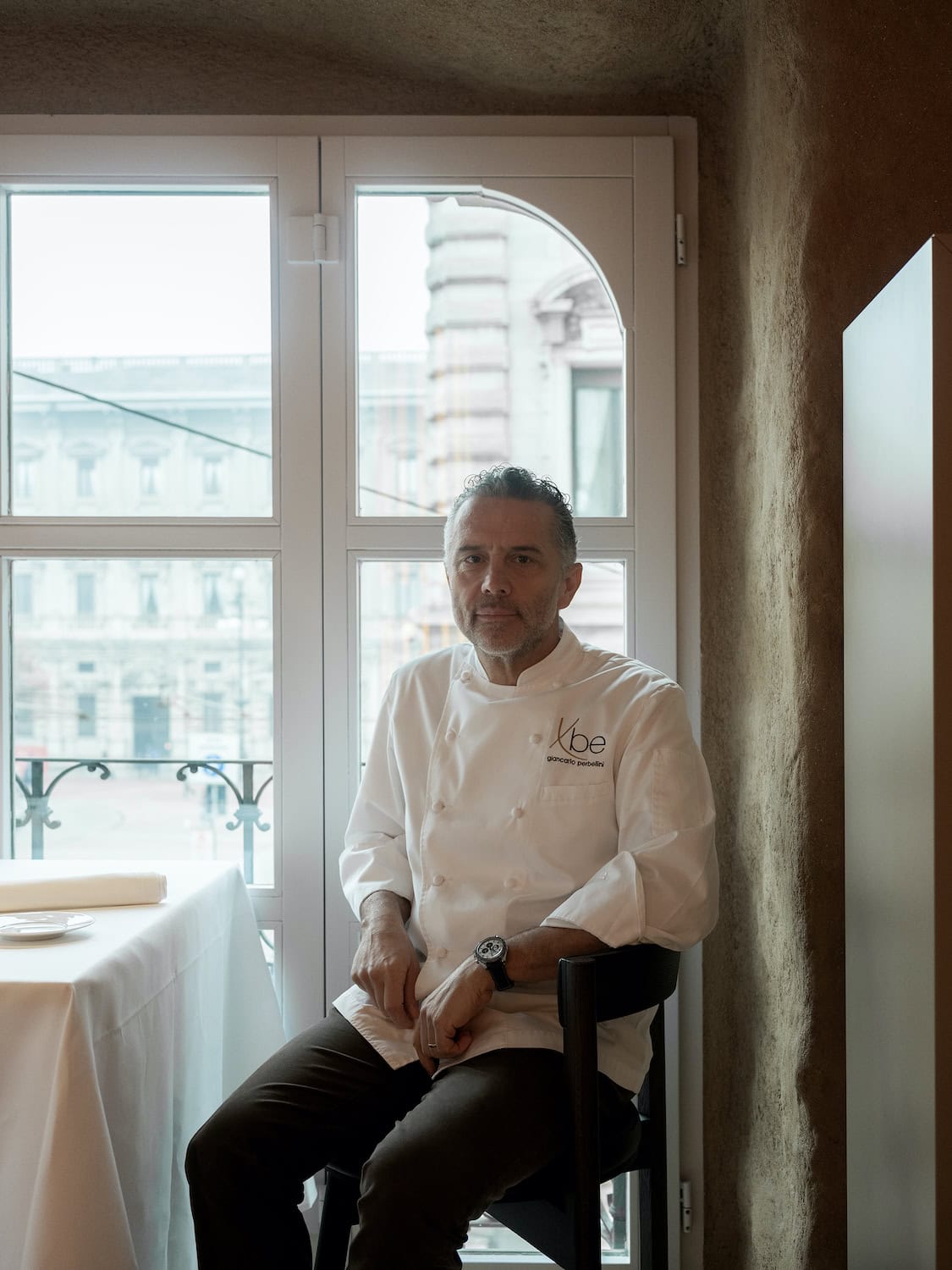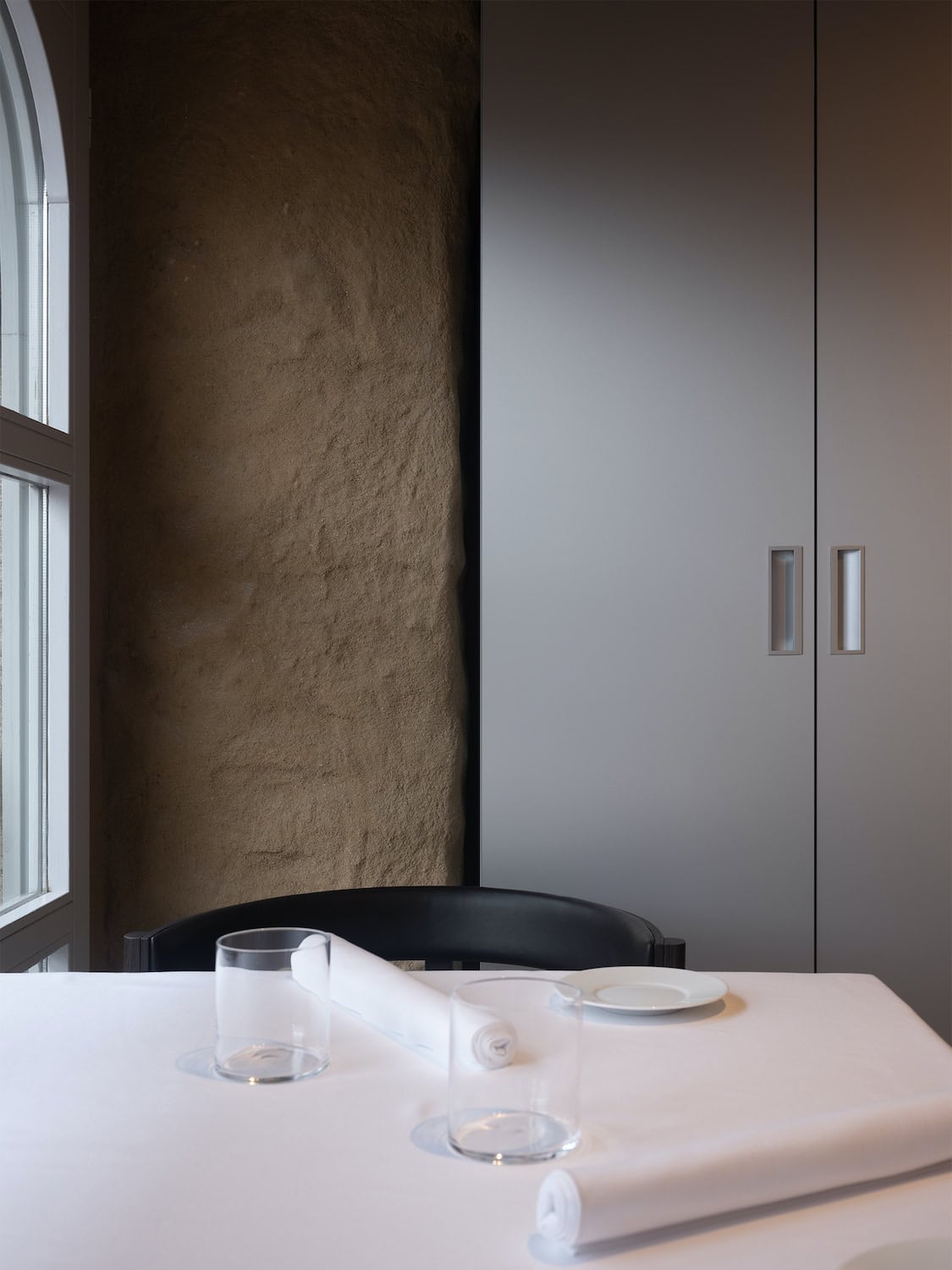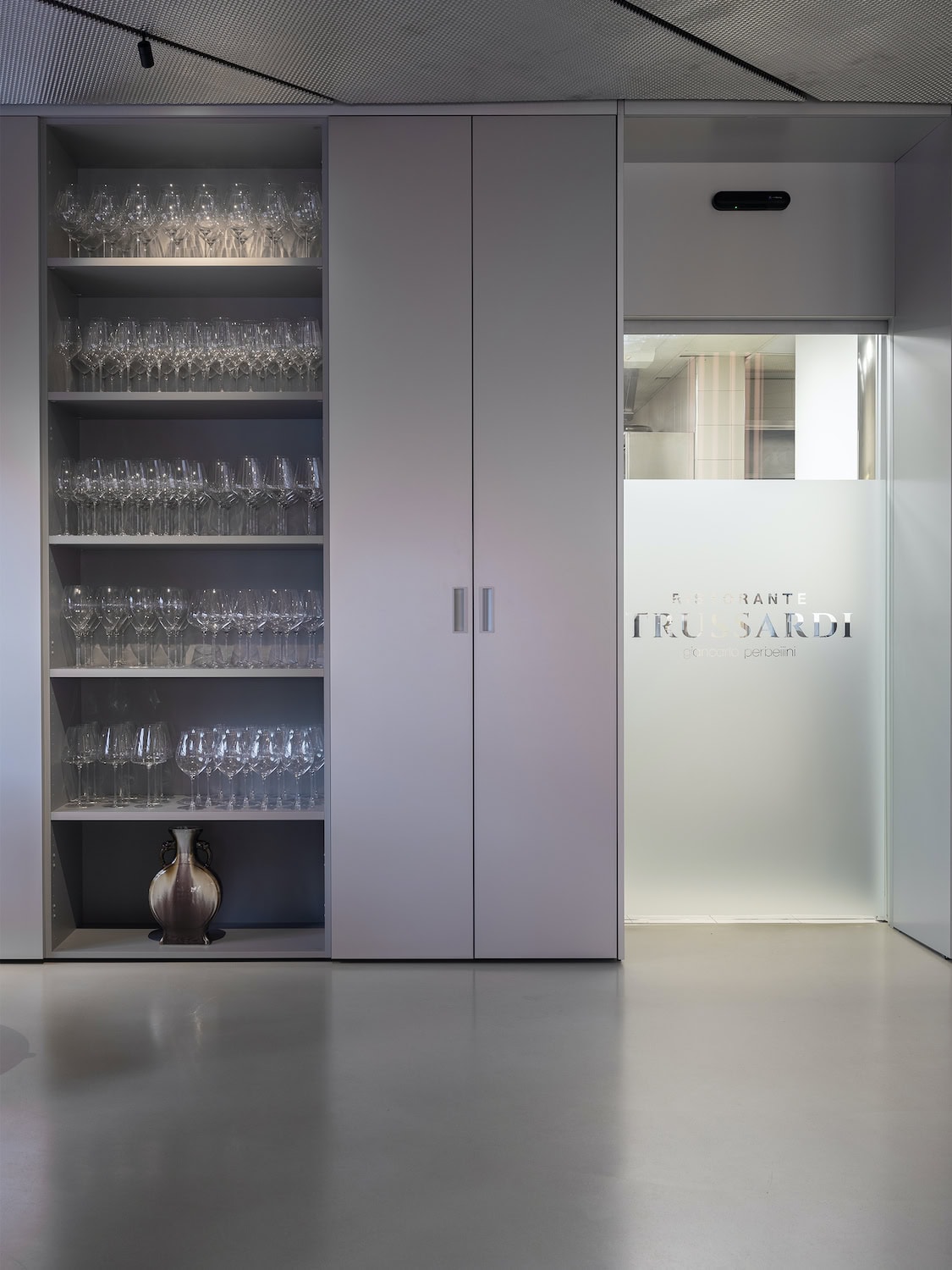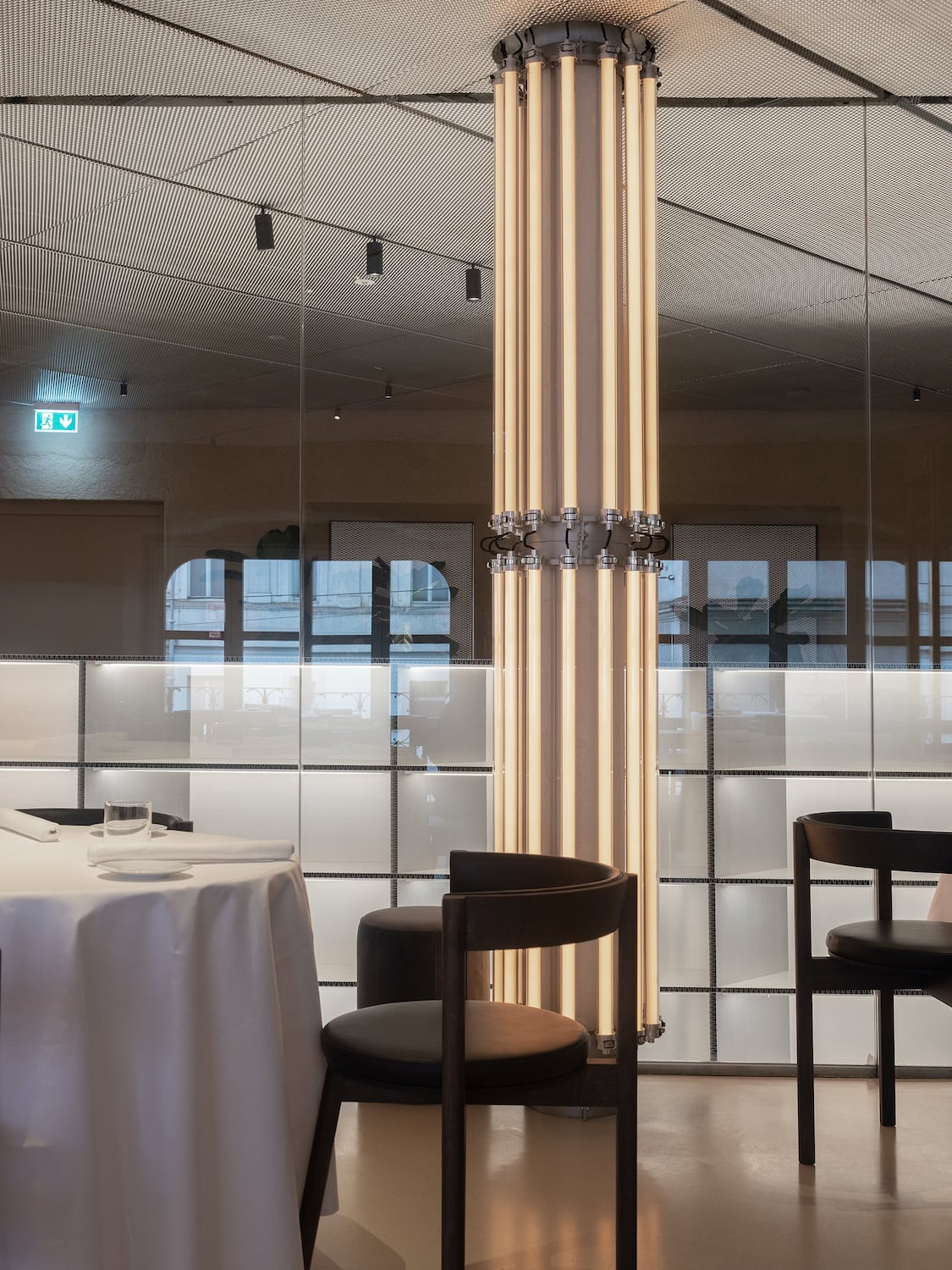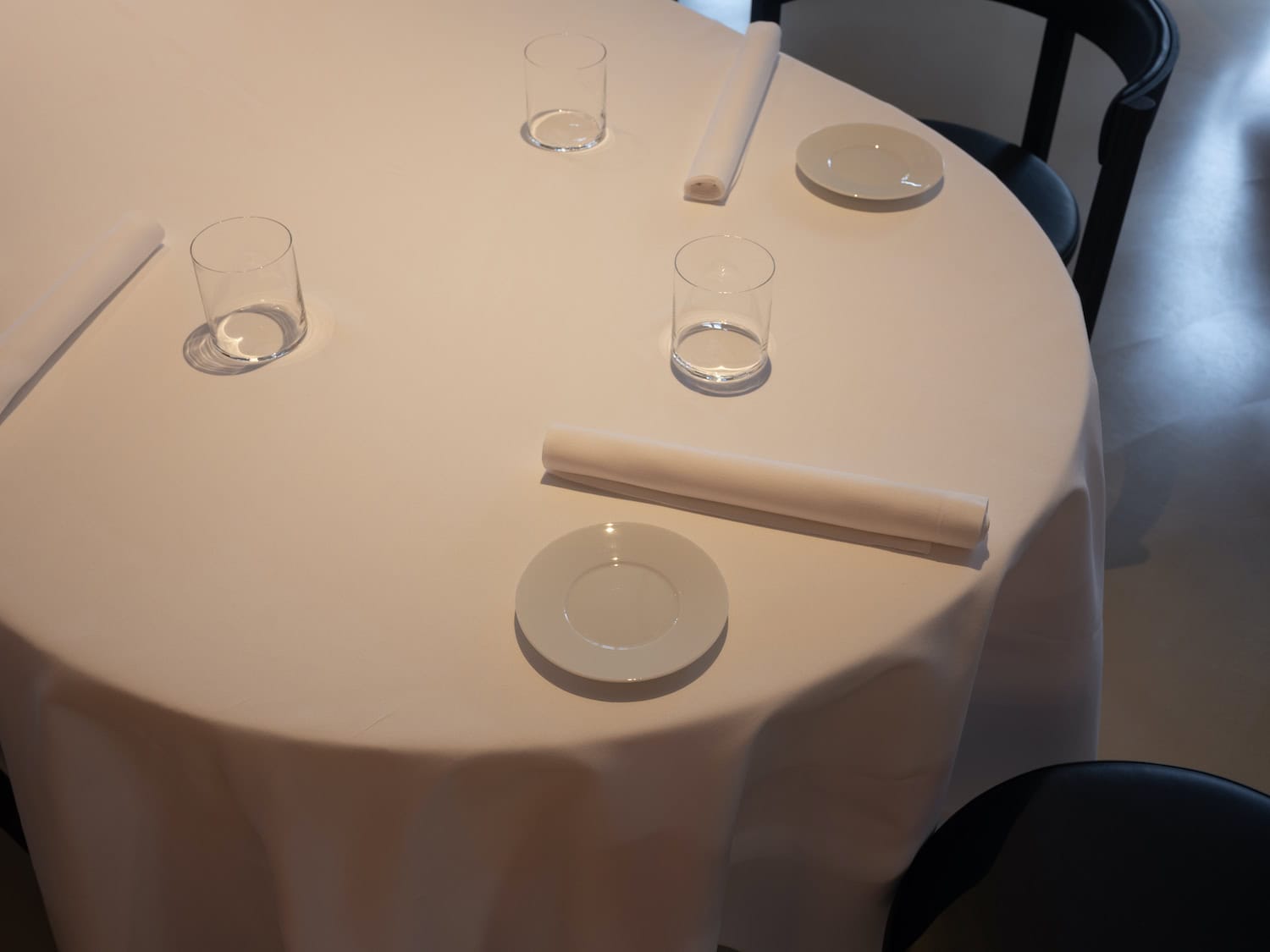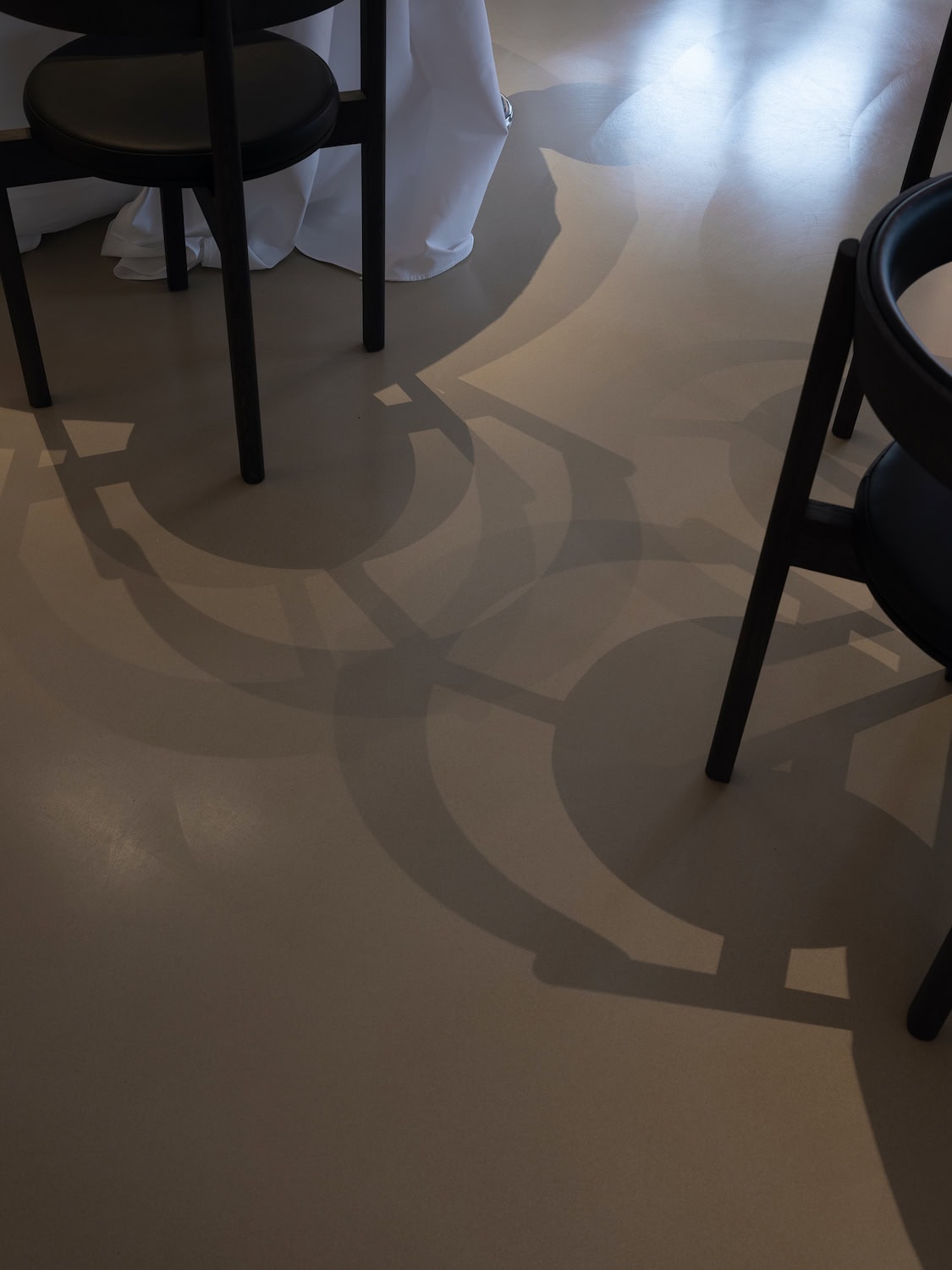As we step in, we are welcomed by a delightful smell of pastries; as we turn our nose to the left, it’s a scent of perfume. To the right, we see croissants, perfectly tiny cakes, soft sandwiches; to the left, we see bags. Marie Antoinette would be overjoyed to lose herself in this perfect setting of luxurious temptations. We, on the other hand, feel slightly confused, but we soon accept to also lose ourselves into a state of pleasing trance. We move upstairs to the restaurant area; it’s eleven in the morning and there is no service in place. It’s always quite poetic to live a restaurant in its preparation phase; you are somehow welcomed to the mystery, to the discovery of the complex mechanism that gives life to a “dining experience”. People running, walking, adjusting, whispering, at times shouting, tinkling sounds of pans, glasses, cutleries, tables half set, a sense of imperfect perfection, a scene in the making: as you look around the environment you can already envision the evening setting becoming. The space is welcoming, calming, soothing, and yet austerely elegant. It is a complex architectural composition that juxtaposes organic materials with more industrial tones; it is a game of mirrors, glasses and reflections, a maze we would more than happily get lost in. Looking out the window, Piazza della Scala is living with its distinctive elegance but we can’t really hear any noise. We are in one of the most iconic areas of the city, of Italy, of culture; the silence suggests a gravitas that can, and should, be felt. We see the street sign, “Via dei Filodrammatici”, and we suddenly feel like being part of a theatre setting.
We are at the Ristorante Trussardi by Giancarlo Perbellini, on the first floor of the recently reopened Trussardi Lifestyle Hub, directly overviewing the ground floor boutique and new Café Trussardi by Giancarlo Perbellini–both gastronomic proposals are guided by the renowned chef Giancarlo Perbellini, if unclear. The name instantly suggests the complexity of layers we are witnessing: fashion, food, music, Milan, culture, internationality, the Chef. And indeed, we are witnessing an informed and intelligent approach to such complexity. How can and should these dimensions speak to each other? The idea of having to consider and somehow marry the plates with the architecture, the shoes with the glasses, the aforementioned scents with the pastries, the soundtrack of the restaurant with the one of the boutique causes a stress reaction, already. But our experience at the new Trussardi Hub felt like witnessing an entire new vocabulary that seamlessly embeds diverse languages.
Let’s go back to the “Lifestyle Hub” idea. Lifestyle is undoubtedly one of the most overused words these days, but it breathes a sort of authority here. Nicola Trussardi himself opened the space in 1996; it was one of the first ever concept stores in the world and has since become a key location of Milan, one with historical relevance. We asked Olaf Grawert, partner at bplus.xyz, the architecture studio in charge of redesigning the entire building, how he interprets this, partly obscure, concept of “lifestyle”. “When we first started it slightly felt like a buzzword; after we started, it became a buzzword filled with meaning in a positive sense. What Nicola Trussardi did was fascinating. He imagined a holistic concept for humans to find everything to live a certain lifestyle. The question became: what would be a new background for humans these days? So we started imagining who the Trussardi customer is. Our work translated into asking ourselves: what would be the space that we imagined whom to do what.”
We loved that sentence and read it ten times over to truly grasp what Olaf meant. It’s a sort of a guessing game made of secret puzzles. The Berlinese studio bplus.xyz, made of architects, artists and designers, worked alongside Thorben Gröbel and the creative directors of Trussardi, Benjamin A. Huseby and Serhat Isik. “It was really a collaborative effort, everyone involved participated with new questions and challenges. It wouldn’t have been possible if there weren’t people committed to the cause” mentions Olaf. The new space reveals Trussardi as part of a change, specifically in how to use resources differently. Olaf mentioned that the brand was flexible to leave their original aesthetic behind, and refer to a certain brutalist one that rediscovered the original base of the building, made of concrete, “accepting a radically different material and a radically different tone”. What the whole team behind the project did was exactly strip the existing space to uncover its original state, its bones. “We started the excavation and partial demolition even though none of us knew what we would find; Trussardi let us do it”.
Those bones were, effectively, made of concrete, the long-lasting material par excellence. Through the years, the several interventions built six layers of plasterboard over the Trussardi building. Here Olaf introduced an incredibly interesting parallelism: the fashion system dresses again, and again and again. bplux.xyz referred to the classic, long-lasting, style of Trussardi, and considered that Perbellini felt no urge to change or find something new. The gastronomical proposal of the restaurant is in fact a revisitation of the traditional Italian osteria in a contemporary key, building a bridge between the present and memories. There seemed to be a common understanding shared with the next generation and young customers, an awareness of the consequences of our actions. The whole team decided to only use materials that could, in the future, be used again and even returned. Although this is something that no one expects customers to appreciate during their journey at Trussardi, all the elements of the space can be removed; the rails are only drilled and screwed together, and no glue is used. The only thing that will forever remain are the bones of the building, today treated with earth. “How do you deal with what you find? How do the next ones deal with what we leave?”; Olaf mentioned that this was key in conceiving the project. The existing architecture in the fashion world finds a tendency to give something of fashion, but as Olaf rightfully mentions, they work at two different speeds; fashion is fast, while architecture is slow. “There is a tendency to ground the speed of fashion with extremely heavy objects–boutiques are filled with marble blocks and one wonders, how do these go together? Is there an approach to slow down fashion with these heavy materials?” bplus.xyz speaks of material honesty. What does it mean, we ask Olaf. “We always want everything to happen fast and the easiest way would be to glue the materials together, but then you’re never able to change it again. You should not treat a material to a point where it cannot ever go back to its natural state. You could only break them. You cannot undo what has been done. The responsibility is to achieve that we have not produced trash. Fastness cannot be the parameter.” Thorben Gröbel designed the fixtures and objects with a reductionist approach, maximising at best the use of recovered materials to give obsolete elements a new function–interestingly, cars’ leather seats and doors have been transformed in stools and exhibition spaces, intentionally left with a visible patina of stains and wrinkles to show how things get beautifully older with time.
A 25-metres-long mirrored shelf at the centre of the ground floor calls for our undivided attention; it is visible from within the hub, and from outside, it reflects what is in the space and what is outside the space, the majestic Piazza della Scala. It serves as a metaphor for the brand’s renovation, the result of an exchange of ideas between Trussardi, bplus.xyz and Thorben Gröbel.
Visiting the Trussardi Lifestyle Hub is a fluid journey that led us to finally understand what lifestyle actually means. “How do you deal with what you find? How do the next ones deal with what we leave?”; the new proposition of Trussardi speaks of a new moment of time, where past and future concurrently live together in endurance.
